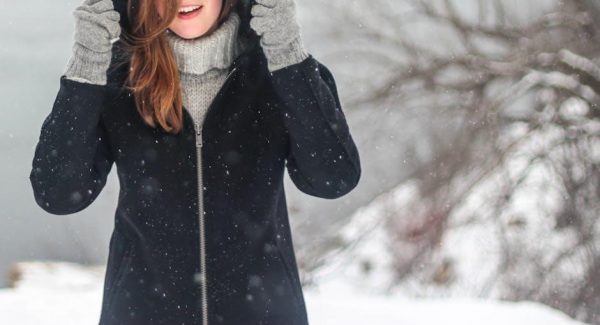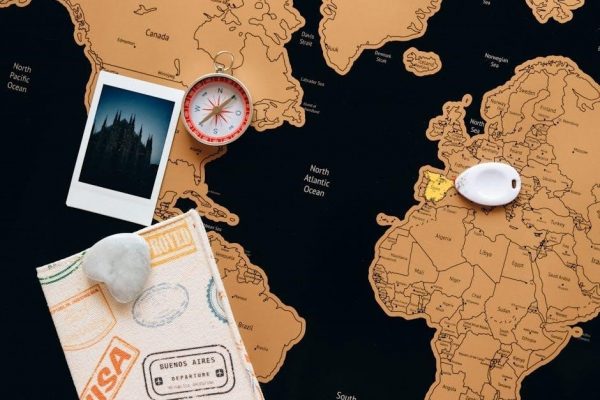Discover cross stitch, a timeless form of counted needlework, offering a creative outlet for crafting beautiful designs․ With its rich history and calming benefits, it’s a perfect hobby for relaxation and artistic expression, suitable for all skill levels, from beginners to experienced stitchers․
1․1 What is Cross Stitch?
Cross stitch is a traditional form of counted needlework where fabric is embroidered with X-shaped stitches following a pattern․ It involves using thread or floss on woven fabric, creating intricate designs․ This craft is versatile, allowing for simple or complex patterns, and is used to make decorative or functional items․ Cross stitch combines creativity with precision, making it accessible to all skill levels․ It’s a popular hobby for relaxation and artistic expression, offering a sense of accomplishment with each completed piece․
1․2 Brief History of Cross Stitch
Cross stitch has a rich history dating back thousands of years, with roots in ancient civilizations such as Egypt, China, and the Middle East․ It was used for both functional and decorative purposes, often in clothing and home textiles․ By the Middle Ages, cross stitch became popular in Europe for creating religious and decorative art․ The Renaissance period saw the rise of intricate cross stitch designs, while the 18th and 19th centuries further popularized it as a hobby among the upper class․ Today, cross stitch remains a beloved craft, blending tradition with modern creativity and innovation․
1․3 Benefits of Cross Stitch as a Hobby
Engaging in cross stitch offers numerous benefits, including mental clarity, creativity, and mindfulness․ It provides a calming, meditative experience, reducing stress and fostering relaxation․ The repetitive nature of stitching can be therapeutic, while the completion of projects boosts confidence and satisfaction․ Cross stitch also encourages patience and attention to detail, making it a rewarding and fulfilling hobby․ Additionally, it allows for artistic expression and the creation of personalized, meaningful pieces․ Many find joy in sharing their work and techniques within the cross stitch community, further enhancing the enjoyable experience․

Materials and Tools Needed
Essential materials include high-quality fabric, vibrant threads, and sturdy needles․ Hoops or frames help maintain tension, while scissors and floss organizers keep your workspace organized and efficient․
2․1 Fabric Types for Cross Stitch
Choosing the right fabric is essential for cross stitch․ Popular options include Aida cloth, known for its stiff, open weave and ease of use, making it ideal for beginners․ Evenweave linen offers a smooth, natural texture and is favored by experienced stitchers for intricate designs․ Zweigart fabric is another versatile choice, available in various counts and suitable for both traditional and modern patterns․ Each fabric type has unique characteristics, and the best choice depends on the desired look and complexity of your project․ Always consider thread count and material when selecting fabric for your cross stitch creations․
2․2 Thread and Floss Selection
Selecting the right thread or floss is crucial for cross stitch․ Popular choices include cotton floss for its softness and silk floss for a luxurious sheen․ Blending filaments can add texture and depth to designs․ Always choose colors that match your pattern, and consider using variegated threads for subtle color transitions․ Quality matters—opt for reputable brands to ensure vibrant, durable results․ Store threads in a cool, dry place to prevent fading․ Organizing your floss on a thread card or in a box can save time and reduce tangles․ The right materials will enhance your stitching experience and final piece․
2․3 Essential Needles and Hoops
In cross stitch, the right tools are vital for success․ A blunt-tipped tapestry needle is ideal for stitching, as it easily navigates fabric without causing damage․ Choose from sizes 24 to 28, with smaller sizes best for finer details․ Hoops or frames keep fabric taut, preventing distortion and making stitching easier․ Select from plastic, wood, or adjustable frames in various sizes to suit your project․ Using a hoop ensures even tension and visibility, enhancing your stitching experience․ Proper tools elevate your craft, ensuring precision and comfort as you create beautiful designs․

Basic Cross Stitch Techniques
Master foundational stitches: the full cross, half stitch, and quarter stitch․ Use backstitch for outlines to create bold, defined lines in your designs․
3․1 Full Cross Stitch
A full cross stitch is the most common stitch in cross stitching, formed by creating an “X” shape on the fabric․ It consists of two diagonal stitches crossing each other, typically worked from top-left to bottom-right and then back․ This stitch is essential for filling large areas and creating bold, vibrant designs․ Proper tension is key to ensure even coverage․ The full cross stitch is often the primary stitch in patterns, making it a fundamental technique for beginners to master․ It’s versatile and widely used in both simple and complex projects, providing a solid foundation for more advanced stitching techniques․
3․2 Half Stitch and Quarter Stitch
The half stitch and quarter stitch are essential techniques in cross stitch, used for adding fine details and shading․ The half stitch covers half the area of a full cross stitch, while the quarter stitch is even smaller, often used for intricate designs․ These stitches are ideal for creating subtle texture and depth in your work․ They are commonly used in patterns requiring delicate features or realistic shading․ Mastering these stitches will enhance your ability to bring complex designs to life with precision and artistry․ They are especially useful for capturing small details in portraits or landscapes, making your stitching more dynamic and visually appealing․ Always refer to your pattern key for guidance on when to use these stitches to ensure your project turns out as intended․
3․3 Backstitch for Outlines
The backstitch is a fundamental technique used to create bold, straight lines and outlines in cross stitch patterns․ It is especially useful for defining shapes, borders, and text within a design․ To execute a backstitch, bring your needle up at the starting point, insert it one stitch length away, and continue stitching in a straight line․ This stitch is typically worked horizontally or vertically, depending on the design․ It adds structure and clarity to your work, making it easier to distinguish details in intricate patterns․ Use a contrasting floss color for outlines to enhance visibility and create a professional finish․ Perfect for lettering and small details, the backstitch is an essential skill for any cross stitcher to master․
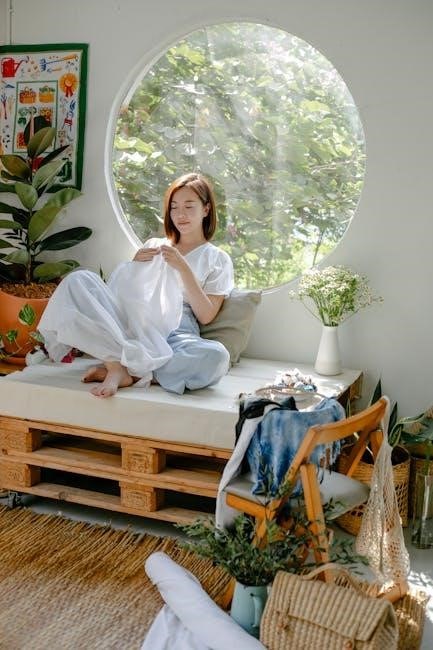
How to Read a Cross Stitch Pattern
Learn to decipher cross stitch patterns by understanding symbols and the pattern key․ This grid-based system guides stitch placement, ensuring accuracy and bringing designs to life․
4․1 Understanding Pattern Symbols
Mastering pattern symbols is essential for cross stitch success․ These symbols, often represented by unique shapes and colors, correspond to specific stitches and threads․ Each symbol, as outlined in the pattern key, indicates where and how to stitch․ For example, a full cross stitch is usually marked with an “X,” while a backstitch might appear as a straight line․ Understanding these symbols ensures accurate stitching and brings your design to life․ Always refer to the pattern key for clarity, as symbols may vary between designs․ This step is crucial for both beginners and experienced stitchers to achieve professional-looking results․
4․2 The Importance of the Pattern Key
The pattern key is essential for accurately interpreting cross stitch designs․ It explains the meaning of symbols, thread colors, and sometimes stitches used in the chart․ Without the key, it’s easy to misidentify colors or symbols, leading to errors․ Each symbol corresponds to a specific thread or stitch type, ensuring the design is stitched correctly․ The key also helps in organizing materials, making the stitching process efficient․ Always refer to the key regularly to avoid mistakes and ensure the final piece matches the intended design; It’s a crucial tool for both beginners and experienced stitchers alike․
Tips for Success
Start projects with a loop start for secure stitching․ Organize threads by color to avoid mix-ups․ Practice patience and consistency for even stitches․ Use resource guides for troubleshooting․
5․1 Starting Your First Project
Beginners should start with a simple project, like a small design on Aida cloth, which is easy to handle․ Choose a kit that includes pre-printed fabric, threads, and a pattern․ Read the instructions carefully and organize your materials․ Start stitching in the center of the design, using the pattern key to guide you․ Use a hoop to keep the fabric taut and ensure even stitches․ Watch tutorials for tips on threading needles and tying knots․ Don’t worry about mistakes—frogging (ripping out stitches) is part of the process․ Keep your workspace clean and well-lit for the best results․
5․2 Avoiding Common Mistakes
To ensure a smooth cross-stitch experience, avoid common errors like starting without a hoop or stretcher frame, which can cause fabric distortion․ Always count threads carefully and follow the pattern key to prevent color mismatches․ Using the wrong needle size or thread type can lead to uneven stitches․ Maintain consistent tension to avoid puckering or loose fabric․ Don’t forget to backstitch outlines for clarity, and always use the correct fabric type for your project․ Skipping these steps can result in a less professional finish․ By being mindful of these tips, you’ll achieve a polished and enjoyable stitching experience․
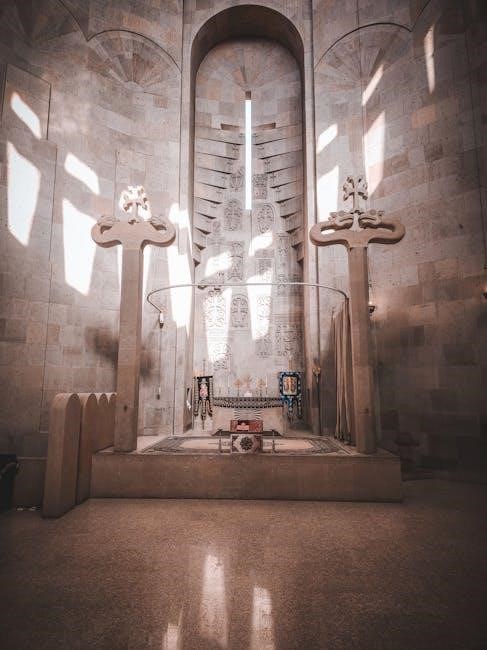
Advanced Techniques
Explore advanced cross stitch techniques to enhance your projects, such as specialty stitches and blending filaments, adding complexity and depth to your designs․
6․1 Specialty Stitches
Specialty stitches elevate cross stitch designs, adding texture and detail; Techniques like bullion knots, French knots, and lazy daisy stitches create dimensional effects․ These stitches are often used for intricate details like flowers or eyes․ Blending filaments, such as metallic or glitter threads, enhance visual appeal․ Advanced stitchers can explore complex patterns, combining specialty stitches for unique results․ These methods require precision but offer endless creativity․ Online tutorials and guides provide step-by-step instructions for mastering these techniques, helping stitchers take their projects to the next level․ Communities also share tips and inspiration for experimenting with specialty stitches․
6․2 Using Blending Filaments
Blending filaments add texture and depth to cross stitch projects by combining different materials․ They create unique visual effects, such as metallic sheens or holographic sparkles, enhancing designs․ Use them sparingly to highlight details or create subtle gradients․ When stitching, pair filaments with regular floss for balance․ A needle threader can help manage these delicate threads․ Experiment with blending filaments to elevate your work and achieve professional-looking results․
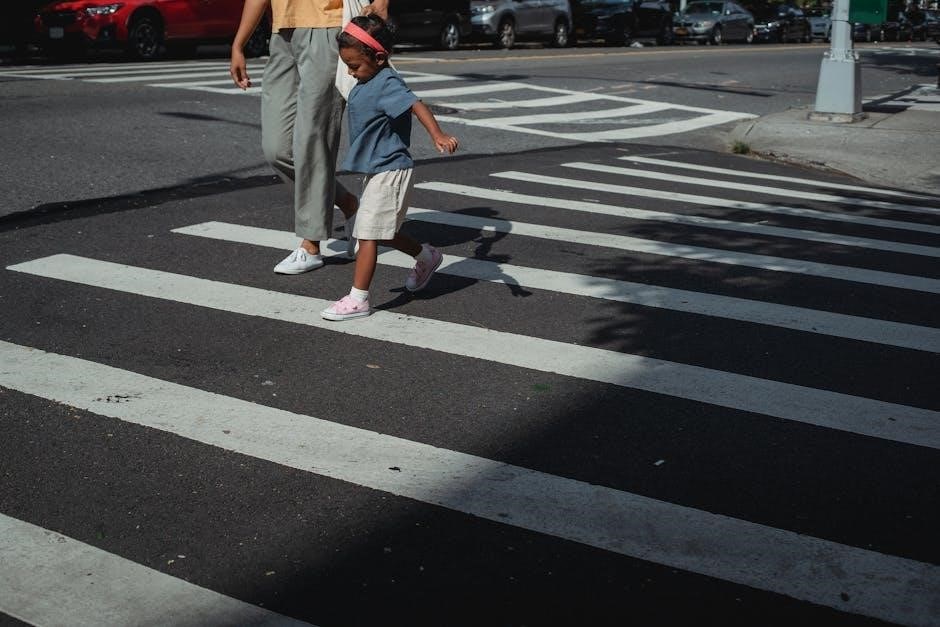
Choosing the Right Project
Selecting the right cross stitch project involves considering skill level, design complexity, and personal interest․ Start with simple kits for beginners or opt for intricate patterns for experienced stitchers, ensuring the project aligns with your time and skill capacity for a fulfilling experience․
7․1 Simple Projects for Beginners
Start with simple projects like samplers, small ornaments, or baby blankets․ These designs use minimal colors and basic stitches, making them ideal for mastering the craft․Begin with a small fabric size and pre-stamped patterns to ease the learning process․ Use the pattern key to identify symbols and thread colors․ Practice essential stitches like the full cross and backstitch․ Join online communities or watch tutorials for additional guidance․ These projects build confidence and skill, preparing you for more complex designs as you progress․
7․2 Complex Designs for Experienced Stitchers
Experienced stitchers can explore intricate patterns with advanced techniques, blending filaments, and specialty stitches․ These designs often feature detailed imagery, layered colors, and unique textures, offering a rewarding challenge․ Kits like the Lord Muruga pattern provide complex projects with detailed keys for thread selection․ Communities and guides offer tips for mastering these designs, ensuring even seasoned stitchers continue to grow․ Complex designs allow for artistic expression and showcase mastery of cross stitch, making them a fulfilling choice for those seeking a creative challenge․

Resources for Cross Stitchers
Explore tutorials, guides, and communities online to enhance your stitching journey․ Websites offer step-by-step instructions, while forums connect stitchers worldwide for tips, inspiration, and support․
8․1 Recommended Tutorials and Guides
Explore a wealth of tutorials and guides to master cross stitch․ Videos and written instructions cover basics like reading patterns and advanced techniques․ Start with beginner-friendly guides offering step-by-step lessons․ Platforms like YouTube and crafting blogs provide visual aids and tips for improving your stitches․ Many resources include troubleshooting common mistakes and enhancing your projects with specialty stitches․ Whether you’re a novice or experienced, these guides offer invaluable insights to refine your skills and explore creative possibilities in cross stitch․
8․2 Communities and Forums
Joining cross stitch communities and forums connects you with fellow enthusiasts, offering support, inspiration, and tips․ Popular platforms include Facebook groups, Reddit forums, and specialized stitching communities․ These spaces allow you to share projects, ask questions, and learn from experienced stitchers․ Many forums feature tutorials, pattern discussions, and event announcements․ Engaging with these groups can enhance your stitching journey, providing motivation and feedback․ Whether you’re a beginner or an expert, these communities foster creativity and camaraderie, making them invaluable resources for cross stitchers worldwide․


